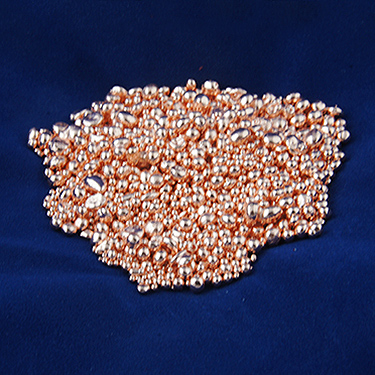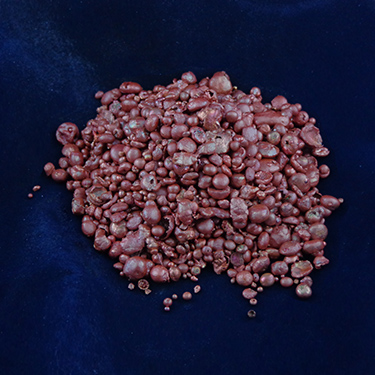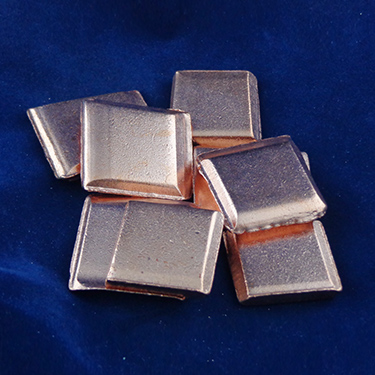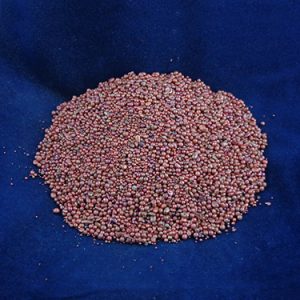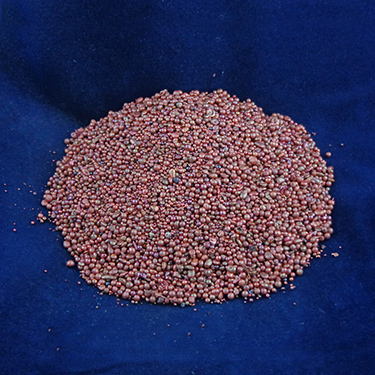For the last several months, metal markets have remained tough to predict because of the pandemic’s various impacts on demand and supply and the overall economic climate. Still, prudent businesses must base forecasts upon the best information they have available. Take a look at this year’s copper market and business developments to gain perspective on…
RELATED POSTS

Jewelry Casting: Advantages of Tin Alloys vs Zinc Alloys
For jewelry casting, manufacturers have a wide range of base metals and alloys to select from for their pieces. Most common metals that consumers are familiar with are gold, silver, platinum, and sterling silver. Yet there are many other types of alloys that may be used, including tin and zinc. When determining which alloy to…

Can Using Nickel Alloys for Jewelry Cause Problems?
When Baron Cronstedt originally extracted nickel in 1751, he intended to produce copper. That’s why he called this newly discovered metal kupfernickel, a German word that roughly translates in English to “devil’s copper.” Even though nickel’s a very useful and popular metal, the name might almost appear ironic to some people in modern times. Though…

Why Companies Are Switching from Lead to Bismuth for Copper and Tin Alloys
Are you looking for an alternative to lead-based alloys? Many companies are moving away from lead and copper and tin alloys due to the regulations and toxicity associated with the heavy metal, and that often means choosing bismuth. The good news is that bismuth has a relatively low melting point, and it’s durable and malleable…

Different Grades of Copper
Copper is a commercial metal that is used throughout the world due to its mechanical and structural properties. This metal offers excellent thermal and electrical conductivity. Also, it resists corrosion as its malleability and ductility allows the metal to be easily worked and fabricated. There are different grades of metal based on its purity levels….

Bell Metals: Properties and Uses in the Musical Industry
When out for a walk by a church or watching a marching band in a parade, you may have listened to the deep ringing tones of a bell or strikes against a cymbal. Such melodious vibrating sounds are created due to the specific type of metal that is used. Bell metals have been around for…

Shot and Cubed Alloys: Advantages of Using Different Shaped Metals
Due to advanced manufacturing processes, companies today can use a range of base metals and alloys to create the right products and components to their industries. When obtaining the metals that will be used in casting, extruding and forming processes, manufacturers can request the alloys and base metals in various sizes and shapes. Ingots, cubes,…

Copper Preventing Future Pandemics? Research Study Evaluates the Metal’s Anti-Microbial Properties
When working with commercial and industrial manufacturing operations, many companies use specific metals in their applications due to their inherent capabilities. One of the most common metals used is copper, as Belmont Metals offers copper metal, copper alloys, and copper-master alloys such as beryllium copper, lithium copper and zirconium copper to manufacturers, jewelers, artists, and…

The Use of White Bronze VS Pewter for Art Casting Applications
When it comes to casting applications, do you know which is better, white bronze or pewter? The most popular choice today and in the past has been pewter, but the use of white bronze has increased in recent years. Here at Belmont Metals, we have both white bronze and pewter that’s perfect for all your…

The Difference Silicon Bronze and Silicon Brass for Art Casting Applications
Craftspeople have been casting with bronze for so long that the BBC called it the “first alloy.” Introduced around 3,500 BC and typically made with mostly copper and tin, items made with bronze offered a more durable alternative to coper alone. Artifacts from brass have been dated to 500 BC. Brass may have been favored…

Gold Karat Alloying: Adding Master Alloys and Virgin Additives to Enhance Characteristics
The beauty and rarity of gold is well-known. It’s treasured by jewelers due to its brilliant color and historians who are in search of antique coins. For everyday applications, gold is found throughout our lives in smart phones, laptops and other electronics as this metal is crafted into gold-plated circuit boards. Applications will use gold…

Alloy Impurities: Trace Elements Changing the Characteristics of Copper
Throughout industrial and manufacturing operations, you’ll find copper metals used in both equipment and finished products. Pure copper has incredible thermal and conducive properties. It also provides exceptional corrosion resistance. So you’ll often find it in electrical applications and electronic products. In addition, pure copper is very soft and malleable, making it ideal for numerous…

The Versatility of Pewter: Alloy Types for Decorative Applications
When it comes to decorative alloys, pewter has made a comeback in recent years in the jewelry and crafting industries. This versatile alloy can be found throughout the jewelry world as plated rings, necklaces and bracelets. It is also fashioned into medals, pendants, figurines, statues, and replica coins. Many people may not actually know that…

Art Casting with Bronze and Brass
Creating art using the casting process dates back thousands of years as the oldest surviving piece of cast art dates back to 3200 BC. Yet artists today still enjoy creating a range of decorations, statues, figurines, jewelry and other artistic pieces using this process. The procedure involves using molten metals that are poured into a…

Brass and Bronze for Casting Alloys in Decorative Applications
When talking about brass and bronze, we most often think about these alloys in industrial settings, such as bronze industrial bushings and bearings, or brass valves and plumbing fixtures. Yet walk into a museum and will be surrounded by sculptures made out of bronze, or attend a classical opera and you will see brass instruments….

Choosing an Alloy to Get the Best Application Results
Brass and bronze are used in a range of applications, such as component parts for factories, end products for commercial retailers, and creating jewelry for the public. Brass alloys consist of the base metal of copper with varying amounts of zinc added, while bronze contains copper with aluminum, tin, magnesium and other materials. Yet how…

Nickel in Alloys For Jewelry Makers: Looking for Safer Alternatives
No matter the latest fashion trends hitting the New York and Paris runways, every model will have one thing in common: the jewelry they wear. Jewelry manufacturing is a booming business as adults and children of all ages are looking for the right jewelry to wear for everyday activities, special occasions and to have as…

Water safety
Lead-free and low-lead alloys keep up with plumbing industry regulations Copper faucets, sinks and appliances have a lustrous color that helps create a warm atmosphere, making a house feel like a home. Copper and its alloys also are functional and durable. They resist corrosion and require little maintenance, which makes red metals an ideal choice…

Safe sparklers
Using lead-free pewter alloys for making jewelry helps alleviate health concerns Adding lead to an alloy can help create characteristics—such as softness and lower melting temperatures—that are useful for many applications. However, lead also is a neurotoxin that is dangerous to animals and humans. Small children are more vulnerable to the effects of lead exposure…

Bring out the best
Master alloys help copper shine Red metals have played an important role in many cultures, including those of the ancient Egyptians and Romans, who crafted tools, cookware, dishes, mirrors and razors out of copper. Modern uses for copper include electrical, heating/cooling applications, fluid handling and plumbing applications, as well as an increasing demand for the…

